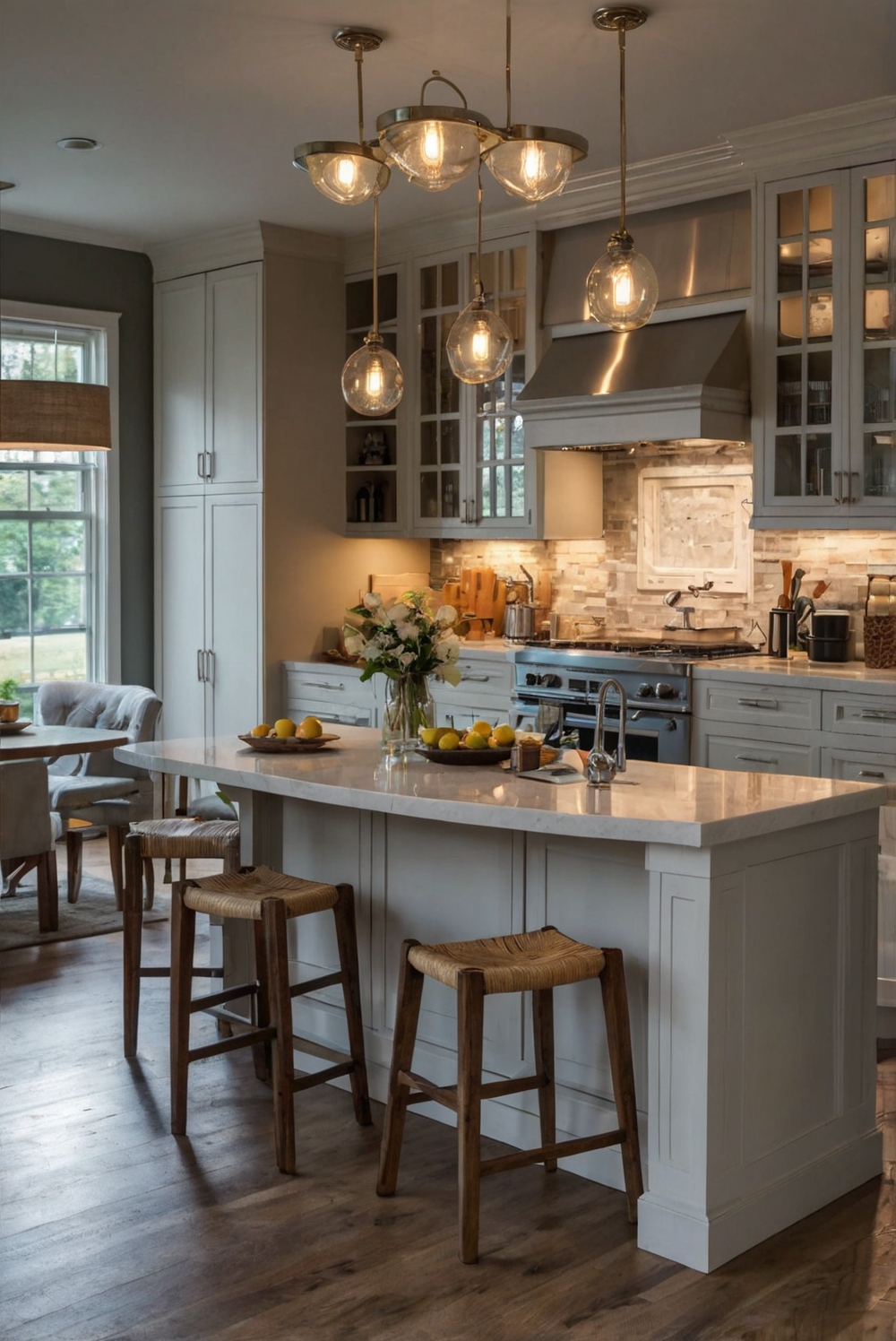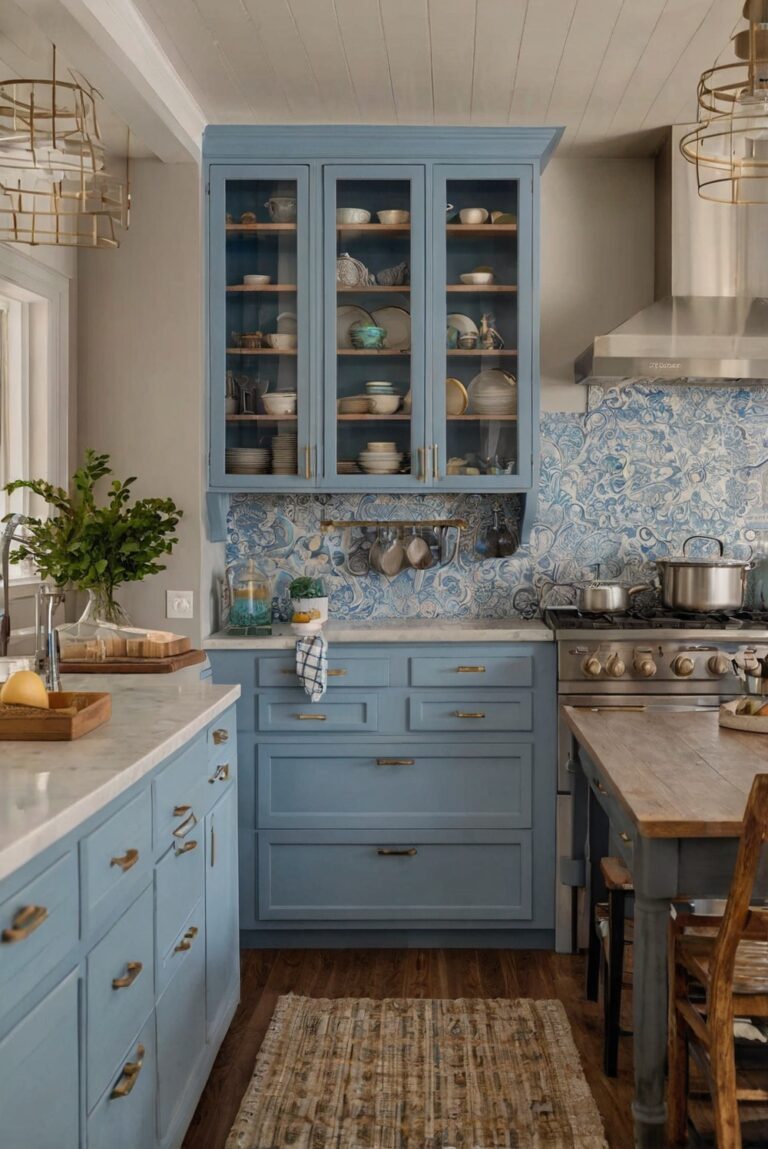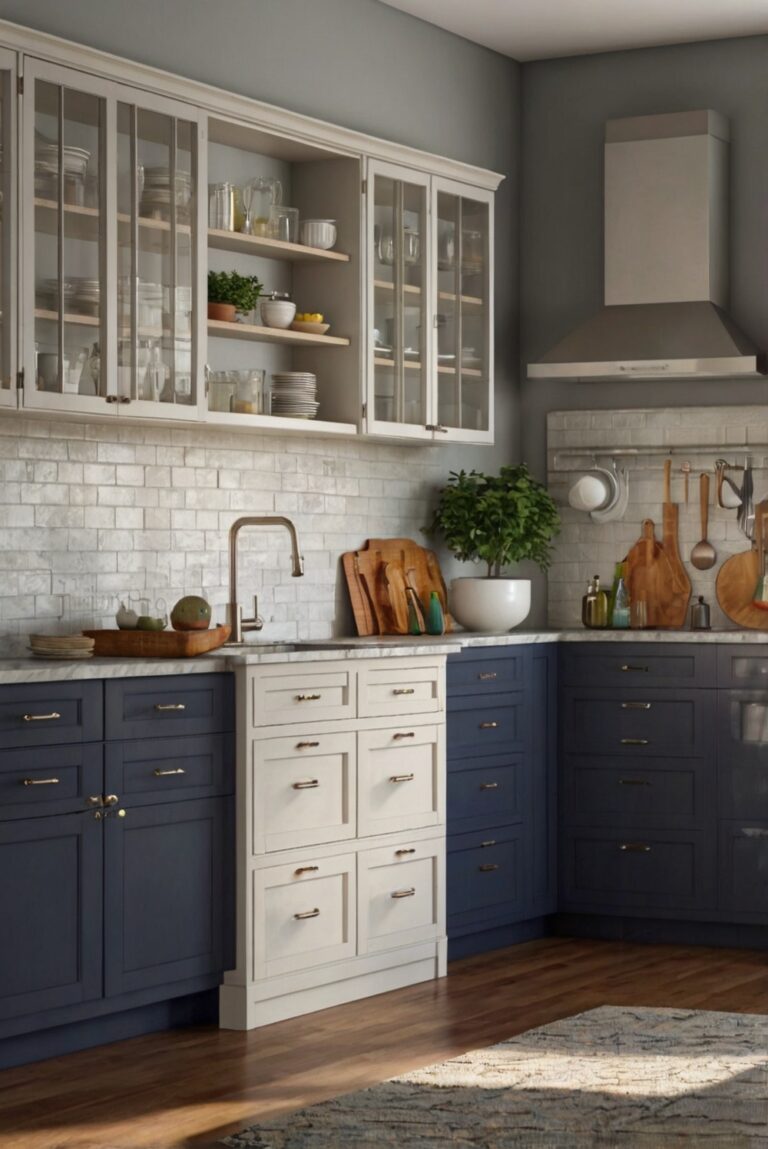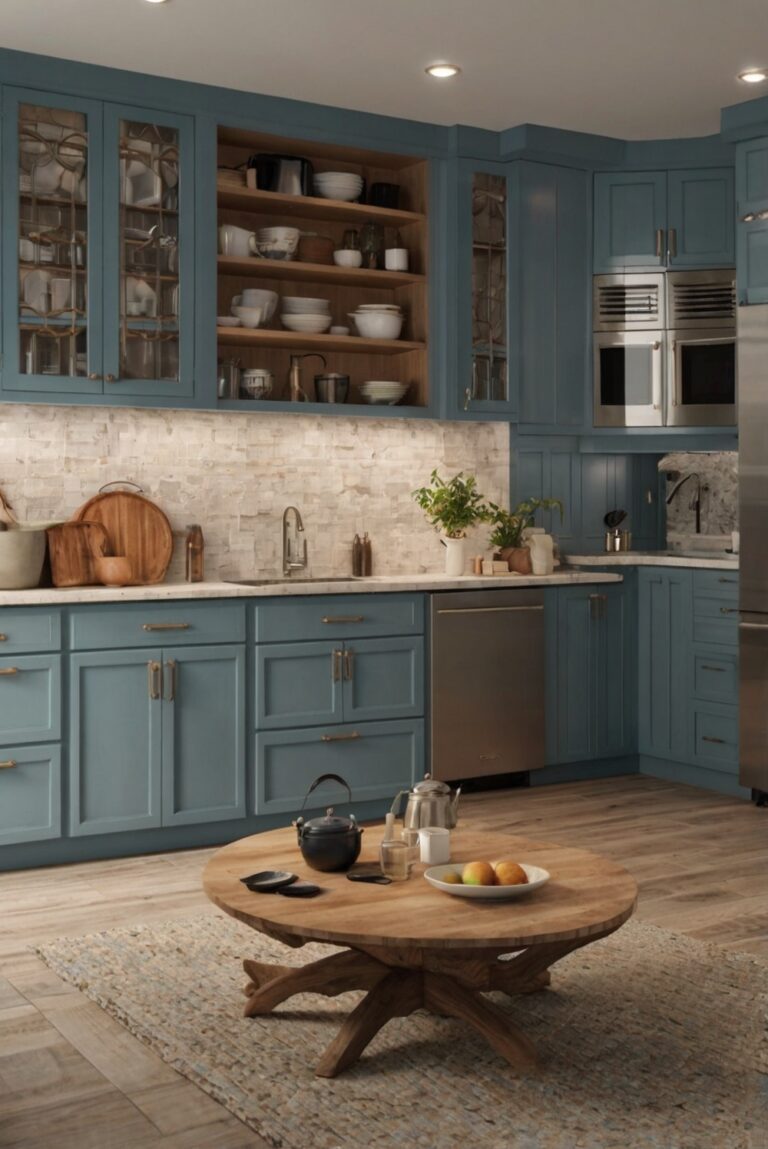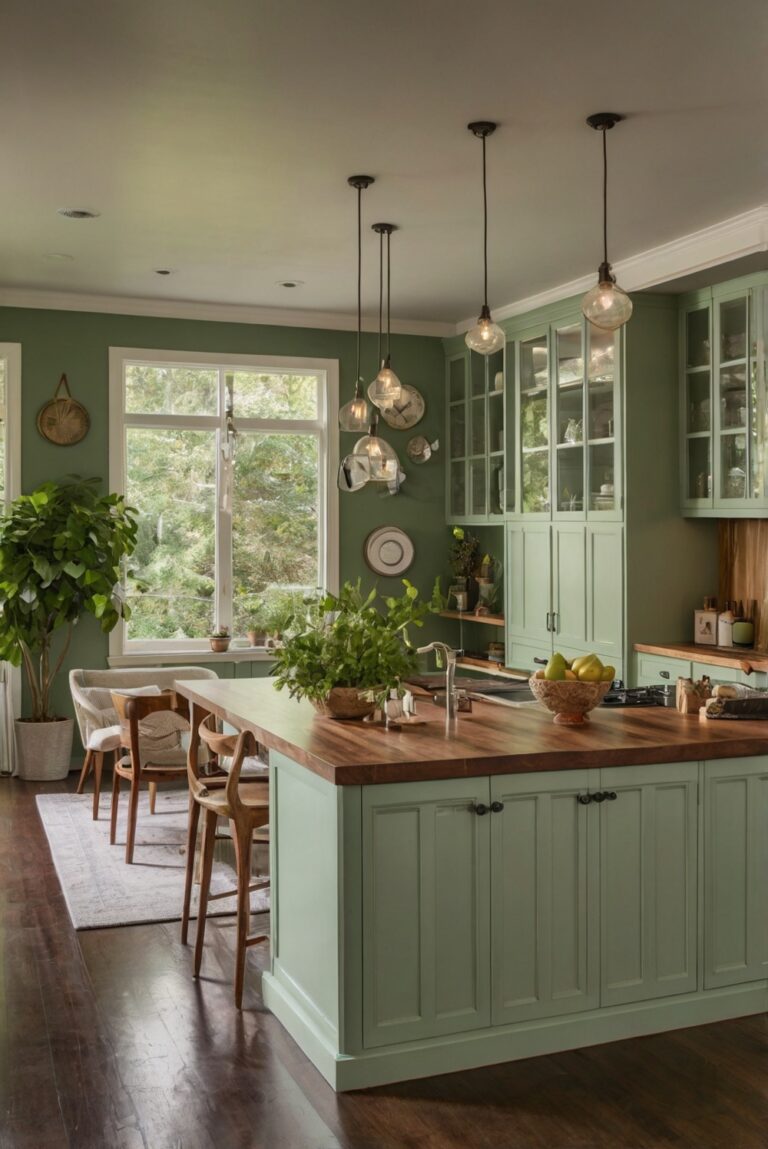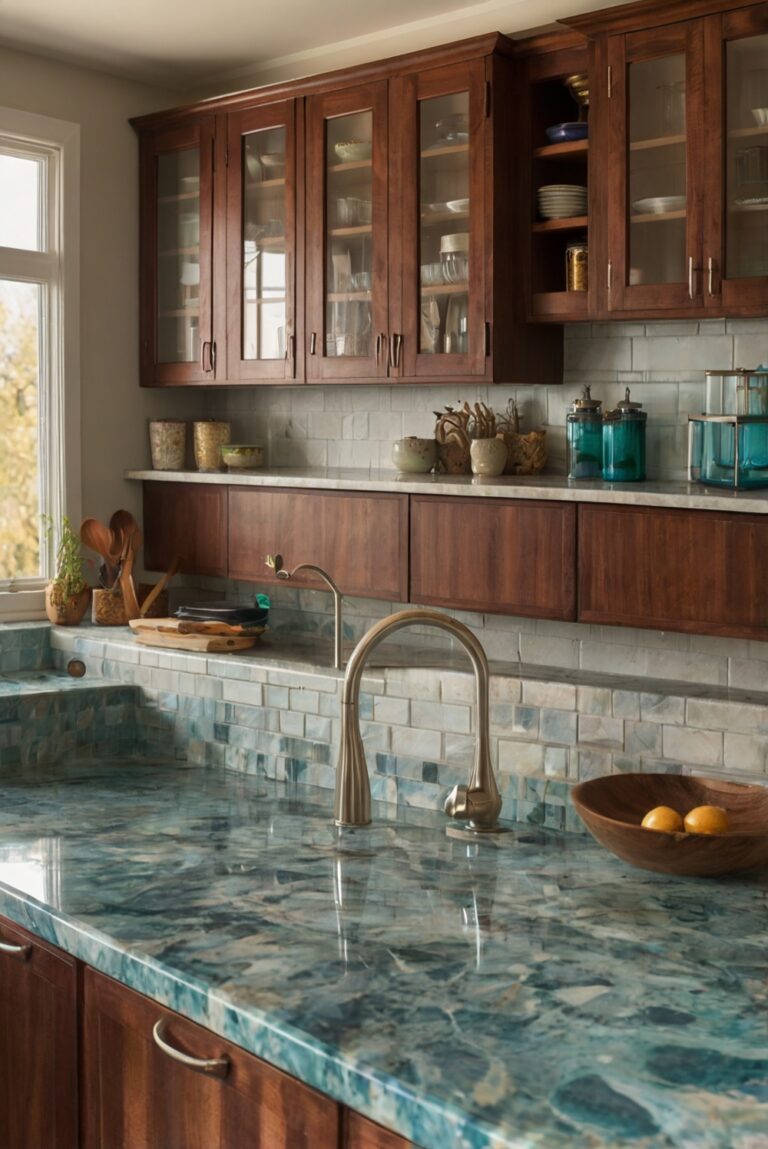Explore the art of using cabinet lighting in your kitchen to elevate its design. Learn how this simple addition can transform your space into a stylish and functional haven.
To enhance your kitchen’s design using cabinet lighting, consider installing LED strip lights or puck lights under the cabinets for a stylish and functional look. This type of lighting provides task lighting for food preparation and adds a warm ambiance to the room. Color temperature is important, so choose a warm white light for a cozy feel. Additionally, dimmer switches can help you control the brightness level according to your needs.
Proper installation is key to ensure safety and efficiency. It’s recommended to hire a professional electrician for installation to avoid any risks. When choosing cabinet lighting, opt for energy-efficient options to reduce electricity consumption. Lastly, make sure to coordinate the lighting with the overall color scheme and style of the kitchen for a cohesive look.
Enhance Your Kitchen’s Design with Cabinet Lighting
Cabinet lighting can be a game-changer when it comes to enhancing the overall design and functionality of your kitchen. Here are some tips on how you can use cabinet lighting to elevate the aesthetic appeal and functionality of your kitchen:
1. Accentuate Key Design Elements
One of the key benefits of cabinet lighting is its ability to highlight important design elements in your kitchen. By strategically placing lights above or below cabinets, you can draw attention to architectural features, backsplashes, or decorative items. This can create a visually appealing focal point and add depth to your kitchen’s design.
2. Create Ambiance and Mood
Cabinet lighting can also help set the mood and ambiance in your kitchen. Soft, warm lighting can create a cozy and inviting atmosphere, perfect for intimate dinners or late-night snacks. On the other hand, bright task lighting can increase visibility and make food preparation easier. By installing dimmable lights, you can easily adjust the lighting intensity to suit different occasions and activities.
3. Increase Functionality and Practicality
In addition to enhancing the visual appeal of your kitchen, cabinet lighting can also improve its functionality and practicality. Under-cabinet lights can illuminate countertops, making it easier to see while cooking or working. This can enhance safety and efficiency in the kitchen, allowing you to perform tasks with ease. Task lighting can also reduce eye strain and fatigue, making your kitchen a more comfortable space to work in.
Maximize Space with Illuminated Cabinets
By incorporating cabinet lighting, you can maximize the use of space in your kitchen. Illuminated cabinets not only look stylish but also make it easier to find and access items stored inside. LED strip lights or puck lights installed inside cabinets can illuminate the contents, making it convenient to locate cookware, utensils, or ingredients. This can streamline your cooking process and keep your kitchen organized and clutter-free.
Consider Energy-Efficient Options for Sustainability
When choosing cabinet lighting, consider energy-efficient options to reduce electricity consumption and lower your carbon footprint. LED lights are a popular choice for cabinet lighting due to their long lifespan and low energy consumption. By opting for LED fixtures, you can enjoy bright, reliable lighting while saving on energy costs in the long run. Additionally, LED lights produce less heat, making them a safer and more eco-friendly lighting solution for your kitchen.
1. What are the benefits of using cabinet lighting in the kitchen design?
Cabinet lighting can enhance the overall aesthetics of your kitchen by providing additional illumination to showcase your cabinetry and create a warm, inviting ambiance. It can also increase visibility in key work areas, such as countertops and stovetops, making meal preparation easier and safer. Additionally, cabinet lighting can highlight architectural details and decorative elements in your kitchen, adding depth and dimension to the space. Studies have shown that well-designed lighting can improve mood and productivity, making it a valuable addition to any kitchen design.
2. What are the different types of cabinet lighting available for enhancing kitchen design?
There are several types of cabinet lighting options to consider when enhancing your kitchen design. Under-cabinet lighting is a popular choice, as it provides task lighting for food preparation and cooking. LED strip lights can be installed on the underside of cabinets to create a sleek, modern look. Puck lights are small, round fixtures that can be mounted inside cabinets to illuminate shelves and display items. Rope lighting is another versatile option that can be used to accentuate cabinet edges or create a soft glow in the kitchen. By incorporating a combination of these lighting types, you can customize the look and feel of your kitchen to suit your design preferences.
3. How can you strategically place cabinet lighting to maximize its impact on kitchen design?
When planning the placement of cabinet lighting in your kitchen, it’s important to consider both functionality and aesthetics. Start by identifying key work areas, such as the sink, stove, and countertops, and install task lighting in these locations to improve visibility. For upper cabinets, under-cabinet lighting can be mounted near the front edge to illuminate the countertop below. In lower cabinets, consider installing puck lights on the sides or back to provide even lighting for storage and display. Additionally, using dimmer switches or smart lighting controls can help you adjust the intensity of the light to create different moods and atmospheres in your kitchen.
4. What are some design tips for using cabinet lighting effectively in the kitchen?
To make the most of cabinet lighting in your kitchen design, consider incorporating lighting fixtures that complement your existing decor and color scheme. For a cohesive look, choose fixtures that match the style of your cabinetry and hardware. Avoid installing lights that are too bright or harsh, as they can create glare and shadow areas in the kitchen. Instead, opt for warm, diffused lighting that enhances the natural beauty of your kitchen materials. Experiment with different lighting placements and angles to highlight focal points and create visual interest in the space. By taking a thoughtful approach to cabinet lighting, you can elevate the design of your kitchen and create a welcoming environment for cooking and entertaining.
5. What are some common mistakes to avoid when using cabinet lighting in kitchen design?
When incorporating cabinet lighting into your kitchen design, it’s important to avoid some common mistakes that can detract from the overall look and functionality of the space. One common error is installing lighting fixtures too close to the front of the cabinets, which can create harsh shadows and uneven lighting. Instead, position the lights closer to the back edge of the cabinet to provide more even illumination. Another mistake to avoid is using mismatched lighting styles or colors, as this can create a disjointed and cluttered appearance. Be sure to choose fixtures that complement each other and work together to enhance the overall design of your kitchen. Additionally, be mindful of the intensity of the lighting and avoid over-lighting the space, as this can make the kitchen feel too bright and sterile. By following these tips and avoiding common mistakes, you can use cabinet lighting effectively to enhance your kitchen design and create a welcoming, well-lit environment.

